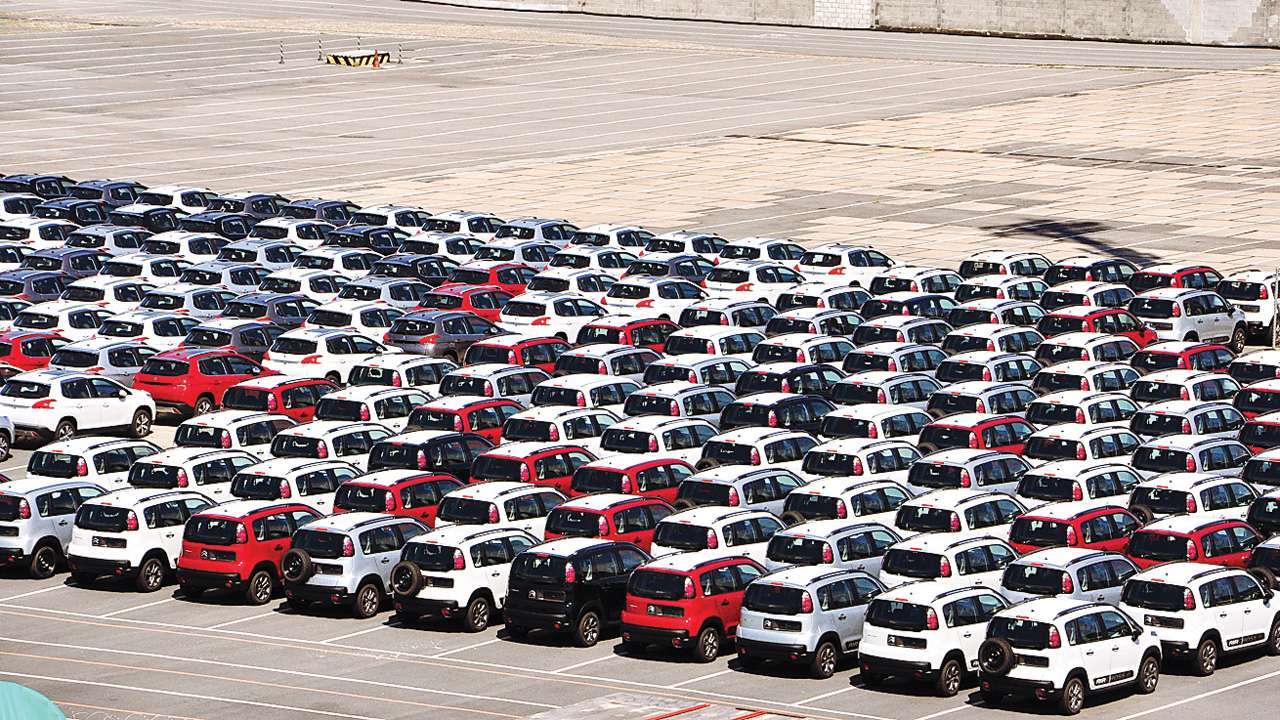H1-2022 registered highest ever half-yearly sales of 18,26,483 vehicles. 2022 average monthly volume stood at 3,04,414 mark – which is the highest in the history of Indian PV sales! March 2022 and June 2022 are 2nd and 3rd best sales month in entire history. Improved supply side situation and demand spillover from 2021 are the major factors.
Indian mass market PV industry COVID-19 recovery
The Indian passenger vehicle industry registered the highest ever half-yearly sales in the H1-2022. Previous highest sales was recorded in H1-2018.
Since the outbreak of COVID-19 in March 2020 and sales downfall in successive months, a V-shaped recovery took the final tally to cross 18 lakh mark in the H1-2022, despite several industry specific headwinds like – fuel and car price inflation, supply side shortage, adverse foreign exchange movement.
In India, nearly 50% of passenger vehicle sales happen in H1 (January-June) period, with March accounting for the second highest sales month due to the financial year closing in India. Data from 2015-2019 is considered over here to avoid unusual peaks and troughs of the recent past.
Deep dive analysis – looking beyond headline data
As evident in the above graph, with the onset of the monsoon in India, June is usually a lean month for vehicle sales, however, June 2022 sales is third best sales month in entire history, also, 2022 average monthly sales stood above 3 lakh mark.
This points to a spillover of demand from previous year, when manufacturers were not able to deliver cars due to supply side constraint caused by semiconductor shortage in H2-2021.
A quick flashback based on the above graph – 2019 sales downfall was caused due economic slowdown and plunged further in H1-2020 due to country wide lockdown compounded by the start of the new BS6 emission standard era. Soon in H2-2020, pent-up demand and shift towards personal mobility over shared mobility led to a V-shaped recovery, and caught every automaker by surprise. H1-2021 again witnessed 2nd wave of COVID-19 related lockdown and production plant closure, thus a protracted growth was witnessed in early 2021, which became further sluggish due to semiconductor shortage (varies from manufacturer to manufacturer) in later part of 2021. Demand for already successful products surged and other manufacturers used discounts-push to gain volume in 2022 to keep their factory running to cover their fixed cost.
Though recovery brought industry to a new level in 2022, headwinds have left varying sizes of holes in the past P&L statements of manufacturers. H1-2018 was the previous best, and underutilization of plant capacity in successive years means nearly 11 lakhs unrecovered volume from the past. This is what appears to be a tailwind for the future as many potential customers who didn’t buy a car as an upgrade or replacement or altogether a new purchase, may still fulfill their consumption urge in future.
Caveat to automotive industry growth
Though not everything is hunky dory in Indian automotive space. The PV industry seems to be out of the woods with a cautiously optimistic future, 2-wheeler (2W) industry is in dire straits, with some minor improvement in recent months.
Lower strata of the economy is badly affected by the aftermath of COVID-19 and inflation has eaten into their disposable income and fuel price hike is acting as a purchase deterrent and all this resulted in failed W-shaped recovery in 2W space.
2W EV volume surged in the recent past, but it’s not good enough to prop the 2W sales across the country, as EVs will remain in the same market perimeter as substitute to ICE within existing demand pool, and will not alter overall demand.
To better understand past growth trends, we put together the Indian passenger vehicle CAGR (Compound-Annual-Growth-Rate) in series, with 2002 as a common base year. Passenger vehicle growth in India is closely linked to economic performance of the country and moves in-line with GDP growth rate, with some lead or lag at times, based on prevailing consumer sentiments.
Dark cloud for now is clear, Central Banks across the globe are raising interest rate to counter unprecedented inflation caused by geo-political conflict, supply-demand imbalance due COVID-19 aftermath, global shipment issues, commodity-super-cycle et al. RBI too is following the global lead and raised interest rate in India by 0.9% in recent past. Now, it’s a double whammy, as inflation invisibly eats into disposable income thus reducing propensity to consume and increased interest rate makes GDP growth slow (varies drastically from country to country), and sometimes may lead to stagflation like situation. Increased interest rate also means increased EMI on loans availed to consume and may slowdown consumption in future, as customers will prioritize their needs. Sometimes commodity super-cycles are followed by global recession, but impact on different countries remain asymmetric, based on their core economic strength and weakness.
What India needs in the short term is dark clouds, quite literally, with a good coverage of monsoon across the length and breadth of the country, of course, without flood like situation in any part of the country. This will help to cool down food inflation and secure food grain needs of the country in the short to mid-term. Silent tailwinds like recovery of un-consumed goods from the recent past and switch to personal mobility over shared mobility (high trip price, rising cancellation rate and deteriorating service quality) will keep Indian PV industry humming and will grow in line with the overall GDP growth of the country, with some lead or lag, provided consumer sentiments don’t turn bad (2013 & 2019).



















